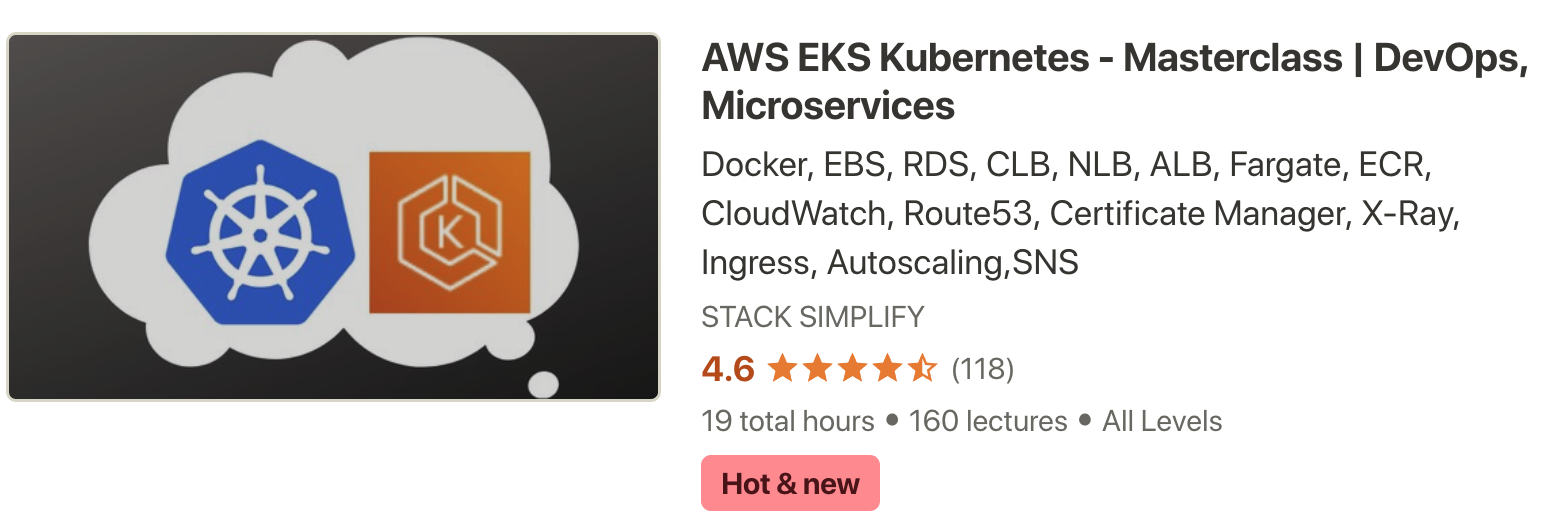Delete EKS Cluster & Node Groups ¶
Step-01: Delete Node Group ¶
- We can delete a nodegroup separately using below
eksctl delete nodegroup# List EKS Clusters eksctl get clusters # Capture Node Group name eksctl get nodegroup --cluster=<clusterName> eksctl get nodegroup --cluster=eksdemo1 # Delete Node Group eksctl delete nodegroup --cluster=<clusterName> --name=<nodegroupName> eksctl delete nodegroup --cluster=eksdemo1 --name=eksdemo1-ng-public1
Step-02: Delete Cluster ¶
- We can delete cluster using
eksctl delete cluster# Delete Cluster eksctl delete cluster <clusterName> eksctl delete cluster eksdemo1
AWS EKS - Elastic Kubernetes Service - Masterclass ¶
Important Notes ¶
Note-1: Rollback any Security Group Changes ¶
- When we create a EKS cluster using
eksctlit creates the worker node security group with only port 22 access. - When we progress through the course, we will be creating many NodePort Services to access and test our applications via browser.
- During this process, we need to add an additional rule to this automatically created security group, allowing access to our applications we have deployed.
- So the point we need to understand here is when we are deleting the cluster using
eksctl, its core components should be in same state which means roll back the change we have done to security group before deleting the cluster. - In this way, cluster will get deleted without any issues, else we might have issues and we need to refer cloudformation events and manually delete few things. In short, we need to go to many places for deletions.
Note-2: Rollback any EC2 Worker Node Instance Role - Policy changes ¶
- When we are doing
EBS Storage Section with EBS CSI Driverwe will add a custom policy to worker node IAM role. - When you are deleting the cluster, first roll back that change and delete it.
- This way we don't face any issues during cluster deletion.
